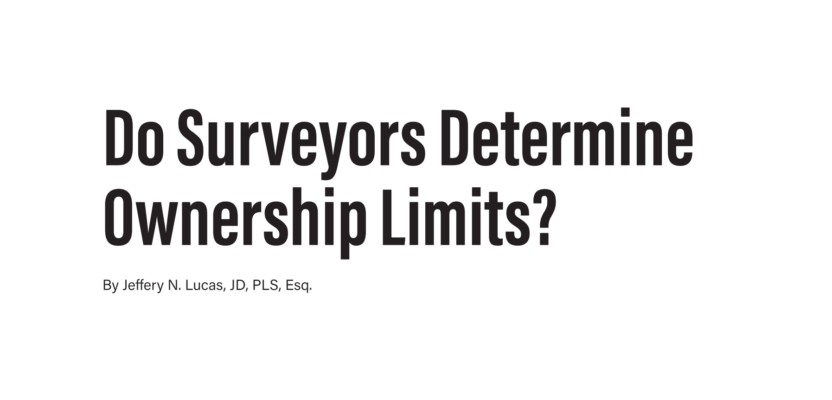Interesting question. The quick and easy answer is, it depends on who you ask. If you randomly ask surveyors this question, my anecdotal evidence from years of traveling and presenting seminars at conferences tells me you have a better than 50 percent chance that the answer will be “No.” If you ask the landowning general public, who know anything about land surveying, you will get a resounding “Yes.” This comes from my experiences with landowners and court cases that I have been in or studied over the last 20 years.
The overwhelming reason boundary disputes go to court is because a surveyor came along and upset the status quo with a new survey, laying out new boundaries in locations where they have never existed.
Once the landowners know the results of the survey, one side wants what the surveyor says they own and the other wants the status quo. Surveyors who do this are under the misguided “belief” that their job is to slavishly layout the deed dimensions from the client’s deed even though contrary to the true established boundaries.
Under the common law of every state, there are only two fundamental principles of surveying property boundaries, and I have not yet found a surveyor who doesn’t know what they are. First, the surveyor is an “original surveyor” laying out new property lines on the ground for the very first time. This is a measurement and math task. The goal is to, as precisely as possible, layout the plan of subdivision.
Second, and more commonly, the surveyor is a “retracement surveyor” finding where the property boundaries have already been established on the ground. Retracement surveying is an evidentiary exercise, not a measurement task.
Some might say, “Well Jeff, the way I heard it is the retracement surveyor follows in the footsteps of the original surveyor.” That is true. Now tell me, who was the original surveyor you are following? In 90 percent of retracement surveying expeditions that take place today, I would venture to guess the original surveyor is unknown.
If it is a requirement that there must be an original surveyor to follow (however “surveyor” might be defined), then the vast majority of our calling as property surveyors evaporates, and the people are left to the vagaries of the subjective judgment of survey technicians. Then we can finally answer the question once and for all: Surveyors are mere technicians, there is not a shred of professionalism left in them.
No, our calling, our duty, our professional responsibility as mandated by state law all across the fruited plain, is to protect the property rights of the landowning citizenry in the only way we can, and that is at the border of the limits of their property rights. It’s called a “property boundary.” There is no other reason for surveyors to be regulated with a license. If all we can do is measure expertly, that does not require a license. In these technology-expanding times, anybody can be an expert measurer.
What society wants from us and needs from us are the same thing. They want to know what they own and where it exists on the ground. The title documents tell them “what” they own, only the surveyor can show them “where” it exists on the ground. And the interesting thing is, when retracement theory is correctly applied by the retracing surveyor, that is exactly what they get: A well-reasoned professional opinion which, in the first instance, only the land surveyor is licensed and sanctioned by the state to give.
The land surveying profession has spent way too much time avoiding our true calling and our state-given duty to protect the people’s property at the boarder of those rights. If all we can do is to be slaves to measurements, society no longer needs our services. They can get their measurements from cheaper sources. It is time to strap on our boots, stand up for our calling and truly define what it means to survey property. Astonishingly, that has yet to be accomplished.
Do land surveyors determine ownership limits? They do, by doing what the what the common law requires.
The purpose of this column is to encourage your questions on boundary surveying issues that we will address in future installments. As such, you are invited to send your questions to the editor of xyHt.

